Malayan Tigers are threatened to the brink of extinction in the Malay Archipelago. Malayan Tigers, also known as “Bengal Tigers,” live in Southeast Asia and India.
- Status: Endangered
- Known as: Malayan Tiger
- Estimated numbers left in wild: 500.
Malayan tigers typically mate with other tigers; however, they can sometimes mate with Bengal tigers if they come into contact with them. Malayan tigers hunt in tall grass and in tall trees because their prey is typically smaller than themselves and hides there.
Description
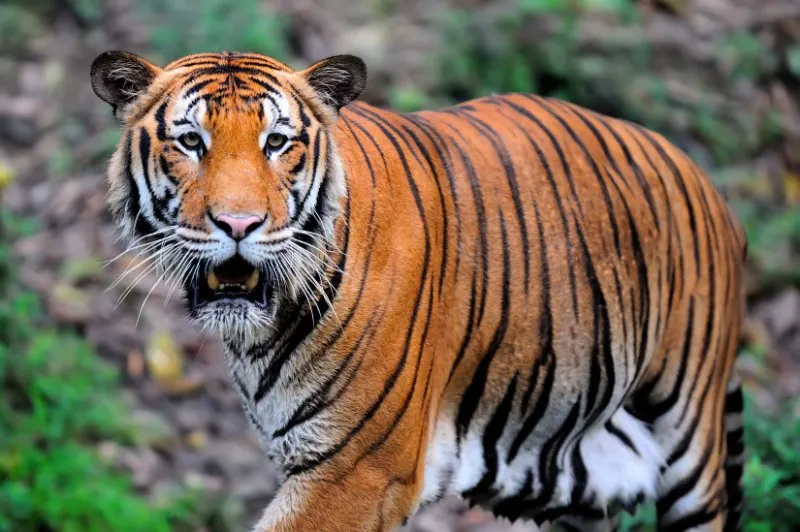
Until fairly recently (2004) the Malayan Tiger (Panthera Tigris Jacksoni) was simply considered to be an Indochinese tiger. However, the smaller size and unique mitochondrial DNA of the Malayan tiger have now designated it as a separate subspecies.
Anatomy and Appearance
Male Malayan tigers average approximately 2 meters to 2.5 meters in length, with the females smaller. The Malayan Tiger is a sub-species of the Bengal tiger.
These species typically weigh between 356 and 485 pounds (between 78 kilograms and 150 kilograms) depending, again, on the sex of the individual. They are reddish-orange fur with black stripes that run from their shoulders down to their hips. These big cats have a broad, flat face with a white mustache.
Orange background with black striping, along with white on the face and undersides, give the Malayan tiger the usual coloration found in these big cats.
Location
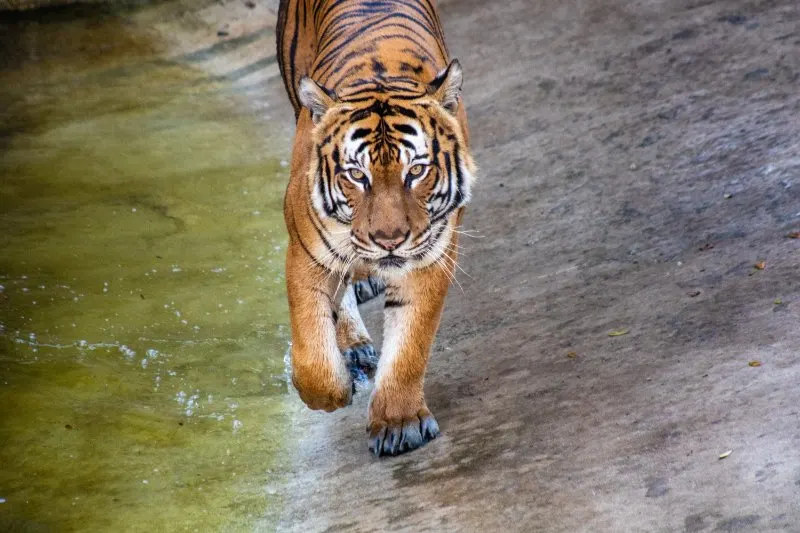
Not surprisingly, the Malayan tiger is found sporadically throughout most of Malaysia, and there are also some of these tigers in Thailand. They enjoy the rainforest as the main type of habitat and terrain.
Malayan Tiger Habitat
While many tiger species enjoy living in densely forested areas, the Malayan tiger is usually content in more open woodland. Prey animals are generally more abundant in open forests. However, because of human incursions into areas where tigers are found, cats are often found in agricultural areas.
Malayan Tiger Diet and Nutrition
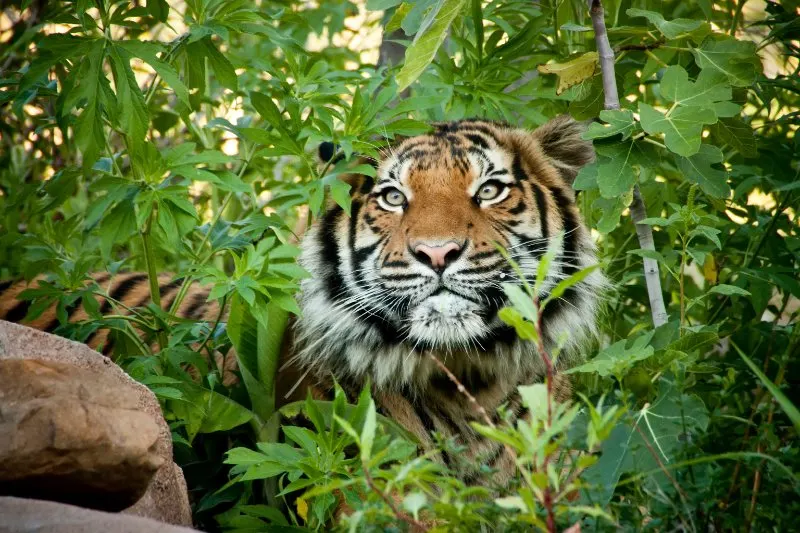
Malayan tigers hunt in tall grass and in tall trees because their prey is typically smaller than themselves and hides there. They have been surviving for millions of years by hunting different types of prey from large mammals to birds and insects.
These species preferentially feeds on deer, wild pigs, bearded pigs, gaur, tapir, sun bear, and elephant calves, but will take domestic animals when wild prey is scarce.
Malayan Tiger Mating Habits
Malayan tigers typically mate with other tigers; however, sometimes these species also mate with Bengal tigers if they come into contact with them.
They can mate year-round, but mating typically takes place between December and April. Malayan cubs will be born around 200 days later; on average, the gestation periods are 93 to 95 days. Mal
The only social group known to tigers, as with other tigers, is the bond between the female and her young. Pairs are formed only for the purpose of mating, and the tigers go their separate ways once the female has been impregnated.
The female will have between 1 and 5 cubs, which remain with her for approximately a year and a half before striking out on their own. Female cubs stay with their mothers for longer periods of time than do male tigers. Mortality among male cubs and young adults is also much higher than that of females.
See Related: List of Animals that Mate for Life
Malayan Tiger Cubs
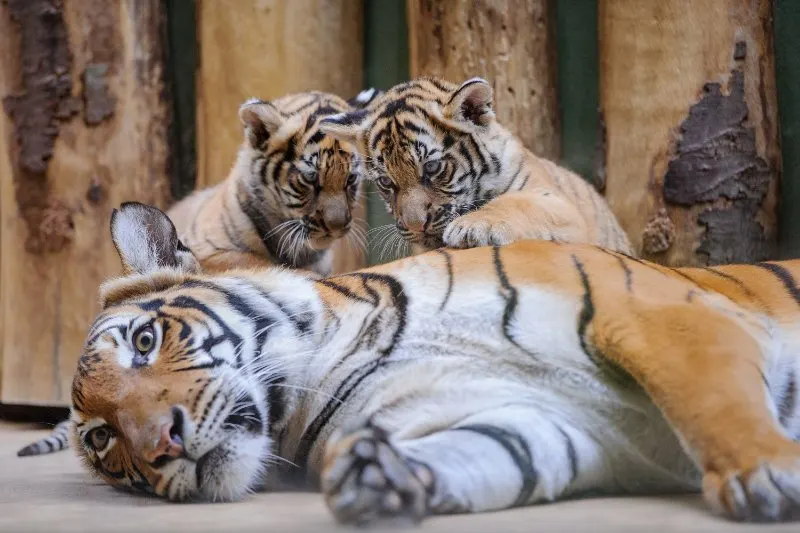
Malayan Tigers are about the size of typical house cats when they are born. They are about 2 feet long when they are born, which would make them about 10 inches long from nose to tail tip.
They grow quickly and can grow to be 12 feet long at adulthood! Malayan tigers reach their full size after nine years. These big cats live alone. These tiger species reach sexual maturity at around 3-4 years of age, but they do not mate until these tigers are about five years old.
This wild beast typically travels alone or in an all-female group. They are solitary animals who mark their territories with urine and by clawing trees.
Role in the Ecosystems
Malayan Tigers play a huge role in the ecosystems of the Malay Archipelago. They also hunt smaller tigers as their prey. The Malay Archipelago is a region that includes Malaysia, Singapore, and Indonesia. They live in Southeast Asia and India. The Malay Archipelago is home to many different species that live from the mangrove forests to the dry land and wetlands.
Behavior

Malayan tigers are typically shy but can be ferocious when they need to be. They have a strong sense of smell and can detect their prey from a very long distance. These species are also very agile; they can jump from tree to tree and run quickly through the jungle.
They typically kill their prey with a bite to the neck. They are also nocturnal hunters. These tigers hunt between dusk and dawn when their prey is most active.
Malayan Tiger and Human Relationship
The Malayan Tiger is critically endangered because of the destruction of their natural habitats and poaching. These big cats used to roam free throughout the Malay Peninsula, Sumatra, and Borneo; but, now they are only found in a small area in the southern part of Malaya. The relationship between humans and these tigers has not been very positive.
Tigers have been killed by humans because they are seen as a threat to their livestock or because they are hunted for sport. Humans have also destroyed the tiger’s natural habitat by clear-cutting forests and building towns and villages.
Malayan Tiger Facts
Here are the interesting facts about Malayan tigers
- Malayan Tiger lives in densely forested areas.
- There are a few interesting facts about these big cats that make them unique from other tigers.
- They typically have stripes that are narrower than those of Bengal tigers, and their fur is typically lighter in color.
- Have a shorter mane than Bengal tigers.
- They are the second-largest species of tiger, and they can weigh up to 650 pounds.
- Live in dense jungle areas and typically hunt and stalking prey that is smaller than themselves.
- These species are extremely territorial and usually do not share their territory with other tigers, but these tigers can sometimes mate with Bengal tigers.
Conservation Status
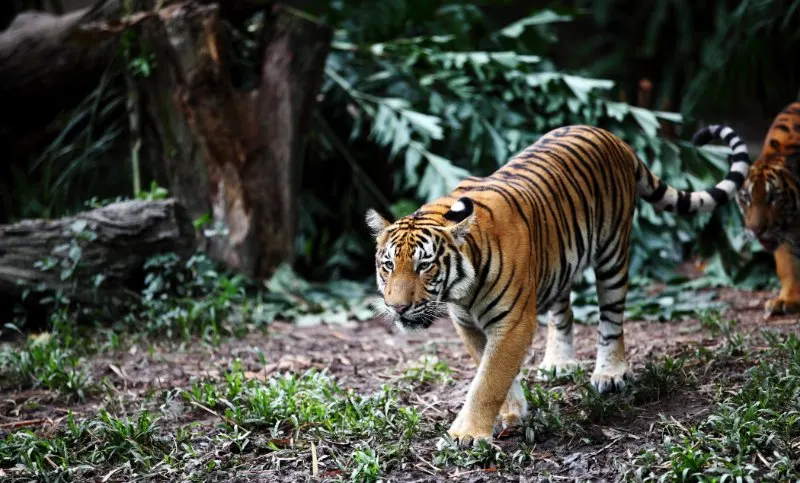
The Malayan Tiger is a critically endangered animal. The main reasons for this are habitat loss and fragmentation, poaching, and the use of tiger body parts in traditional Chinese medicine.
There has been a recent increase in tiger poaching, as the animals are killed for their skins and other body parts. This makes it more important than ever to protect these animals and their habitats.
Threats
Humans and human activities are what constitute the only threats to the Malaysian tiger. Exploding human populations have caused most of the rainforest to be converted to agricultural use, and heavy logging has also caused severe habitat destruction.
Males don’t breed as often as females so young tigers face a high mortality rate from lack of food and competition with other Malay tigers for what is available. When deprived of wild game, tigers will attack domestic stock, leading to farmers hunting them in turn. Fragmentation of tiger habitats also results in difficulties with breeding, and lack of genetic diversity.
Along with the degradation of the physical environment, poachers continuously hunt these tigers for their pelts and body parts. Traditional Chinese and Vietnamese medicines rely heavily on tigers, and it is now thought that organized crime is behind local poaching, making the problem even more difficult to eliminate.
Villagers also eat tiger meat, perhaps in the mistaken notion that they will absorb some of the tiger’s power by eating the animal’s flesh.
See Related: Best Books on Endangered Species
Conservation efforts

Several NGOs, such as World Wildlife Fund and the Wildlife Conservation Society, are working with local governments, government agencies, and populations to protect the existing tigers. Anti-poaching programs have been instituted, including regular patrols of tiger habitat and removal of snares.
The Endau Rompin National Park does offer tigers some sanctuary, and ‘land swaps’ have been made with those who were planning to develop palm plantations in the rainforest for open areas where tigers are absent.
NGOs also try to educate villagers as to the importance of tigers to environmental balance and teach them how to better protect their livestock from attacks by the cats.
Organizations
Panthera

Panthera is an American-based organization. Their main focus is to conserve the world’s largest wild cats including the Malayan Tiger by supporting research and education programs in different countries. The Panthera organization is working to protect Malayan Tigers through a variety of methods, including:
- Providing financial support for anti-poaching patrols and law enforcement efforts.
- Working with local communities to create sustainable livelihoods that do not rely on Malayan Tiger habitat.
- Working with industry partners to create sustainable palm oil that is free from deforestation.
- Protecting Malayan Tiger prey species by working with local communities to reduce their hunting activities.
- Providing financial support for research into tigers and other large carnivores in the Malay Archipelago.
- Conserving Malayan Tiger habitat by working with industry partners to reduce deforestation.
- Running Malayan Tiger conservation education programs for stakeholders surrounding Malayan Tiger habitats.
- Supporting Malayan Tiger translocation efforts by providing funding, expertise, and training.
Final Thoughts
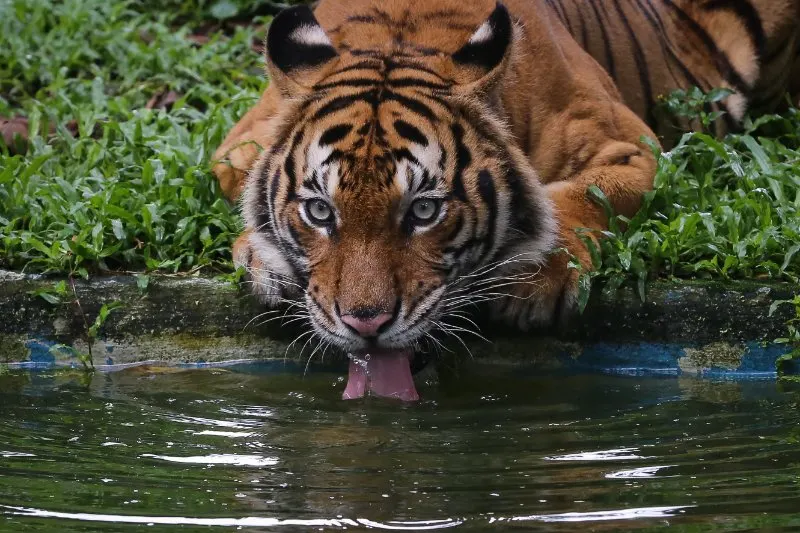
In the Malay Archipelago, the Malayan Tigers are on the verge of extinction. Male Malayan tigers can occasionally mate with Bengal tigers if they come into touch with them.
These big cats usually hunt in tall grass and in tall trees because their prey is typically smaller than themselves and hides there.
The main reasons for this are habitat loss and fragmentation, poaching, and the use of tiger body parts in traditional Chinese medicine. Humans and human activities are what constitute the only threats to these species.
Exploding human number have caused most of the rainforest to be converted to agricultural use, heavy logging has also caused severe habitat destruction and lower tiger populations.
When deprived of wild game, tigers will attack domestic stock leading farmers hunting them backisheries operating in tiger habitats that have caused the destruction of mangroves and subsequent pollution.
Tiger poaching is also a major threat these tigers are facing, tigers are illegally captured to be sold for their body parts which are used in Chinese medicine. The Malayan tiger population has declined drastically since the 1980s because of poaching & deforestation.
FAQ
What is Malayan Tiger?
Malayan tigers, also known as “Bengal tigers,” live in Southeast Asia and India.
They typically mate with other tigers; however, they can sometimes mate with Bengal tigers if they come into contact with them. These tiger species hunt in tall grass and in tall trees because their prey is typically smaller than themselves and hides there.
Is Malayan Tiger endangered?
Malayan Tigers are threatened to the brink of extinction in the Malay Archipelago.
Malayan Tigers are critically endangered because they have a low population number and their habitat is being destroyed. Malayan Tigers often mate with Bengal tigers because Malay Tiger females do not reproduce as frequently as Malay males.
How many Malayan Tigers are left in the world?
Malayan Tigers are threatened to the brink of extinction in the Malay Archipelago.
These big cats typically mate with other tigers; however, they can sometimes mate with Bengal tigers if they come into contact with them. Malayan Tigers hunt in tall grass and in tall trees because their prey is typically smaller than themselves and hides there.
They’re endangered, but a 2011 study showed that at least 1,200 Malay Tiger breeding populations still exist, spanning from Vietnam to Islamic State-controlled territory on the border of Afghanistan and Pakistan. The studies estimate around 258 adults living wild as opposed to those bred in captivity or zoos.
Why is Malaya Tiger threatened to the brink of extinction?
Malayan Tigers are threatened to the brink of extinction Malay Archipelago. Malayan tigers hunt at tall grasses and tall trees because their prey is usually smaller than themselves and hides there.
Tigers have been exterminated by man because they were considered a danger to livestock or for the thrill of it. Humans have also destroyed the tiger’s habitat by clear-cutting forests and erecting cities and settlements.
Other Species Profiles
Related Resources
